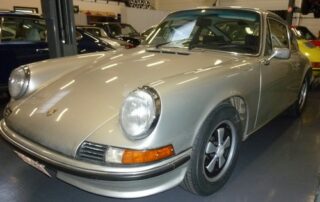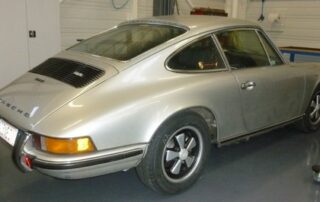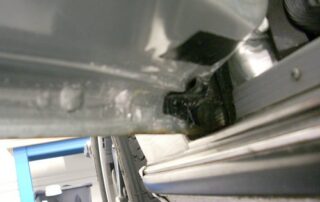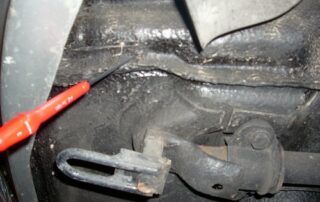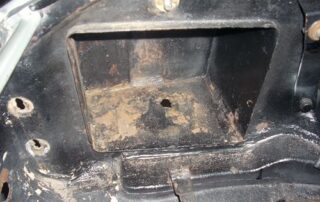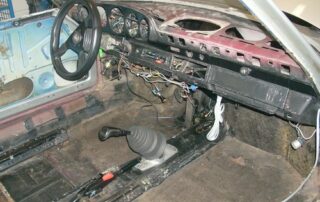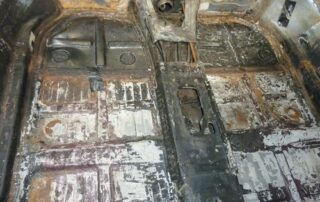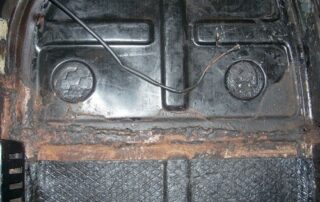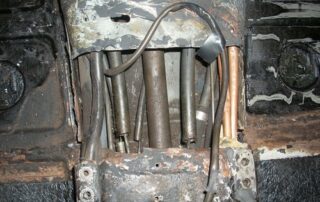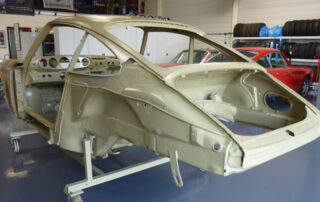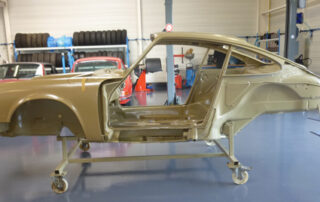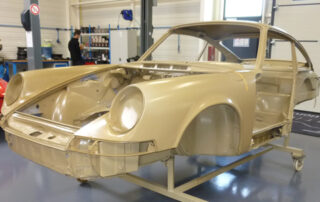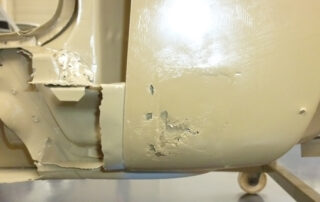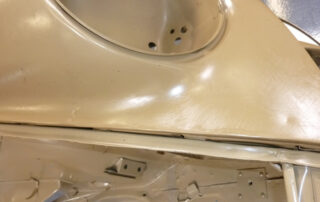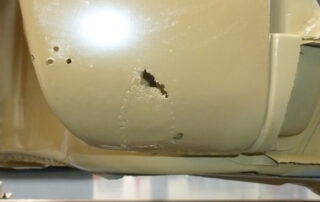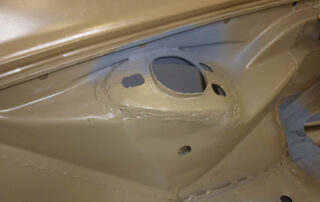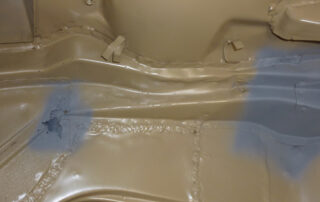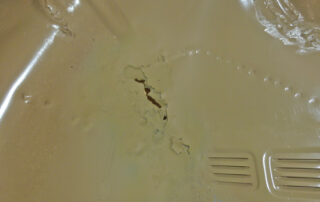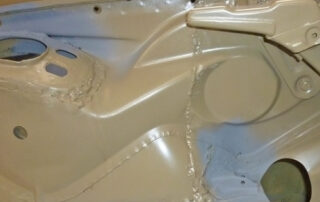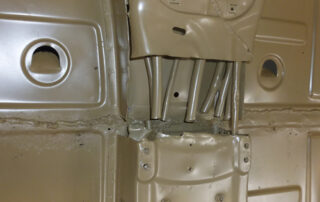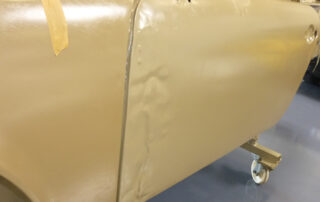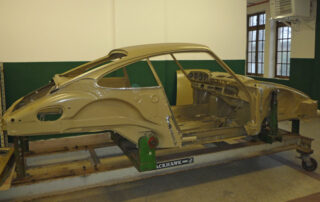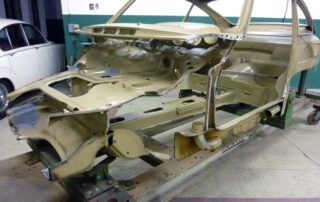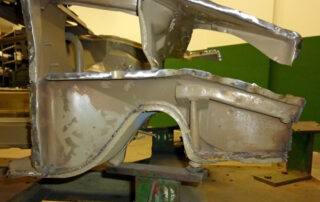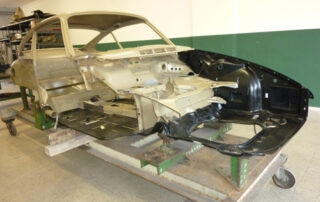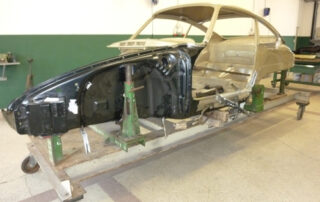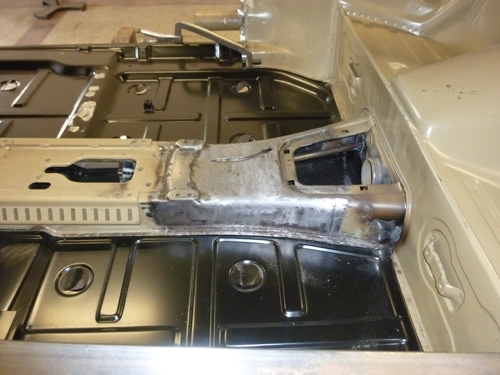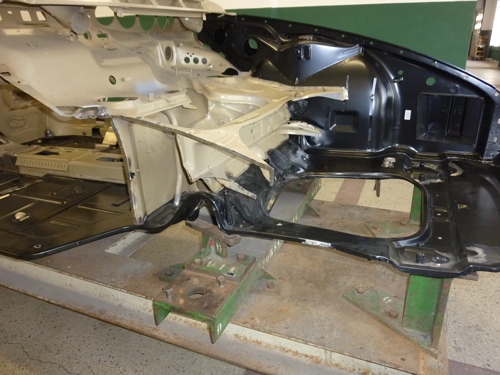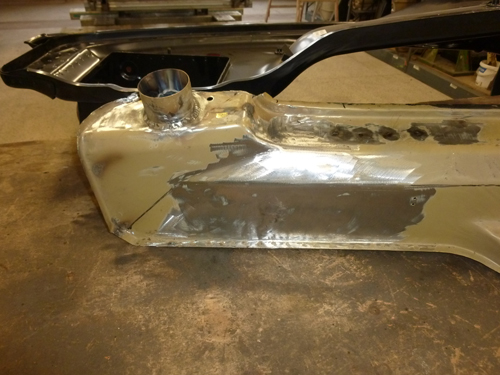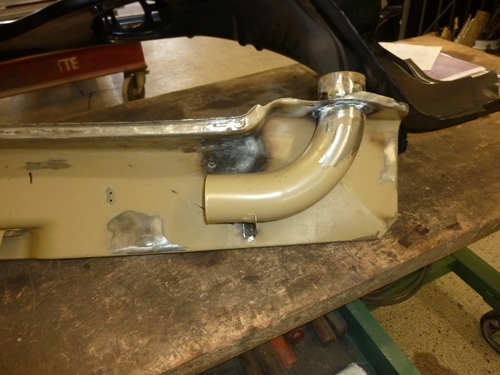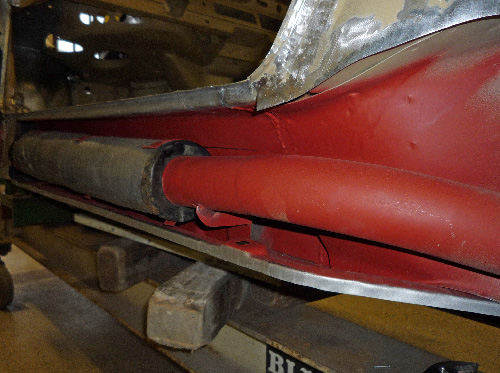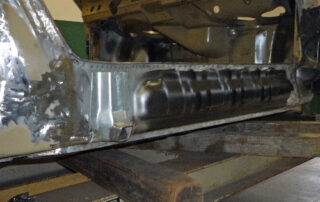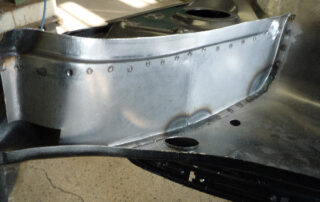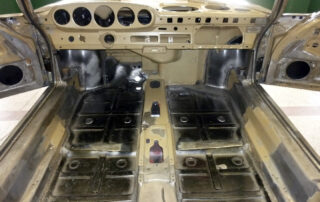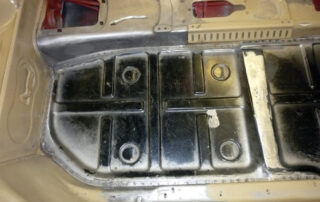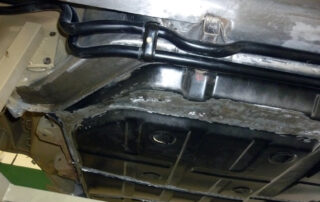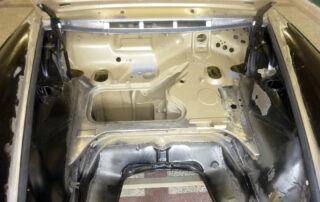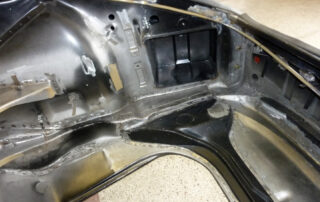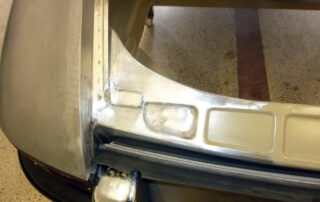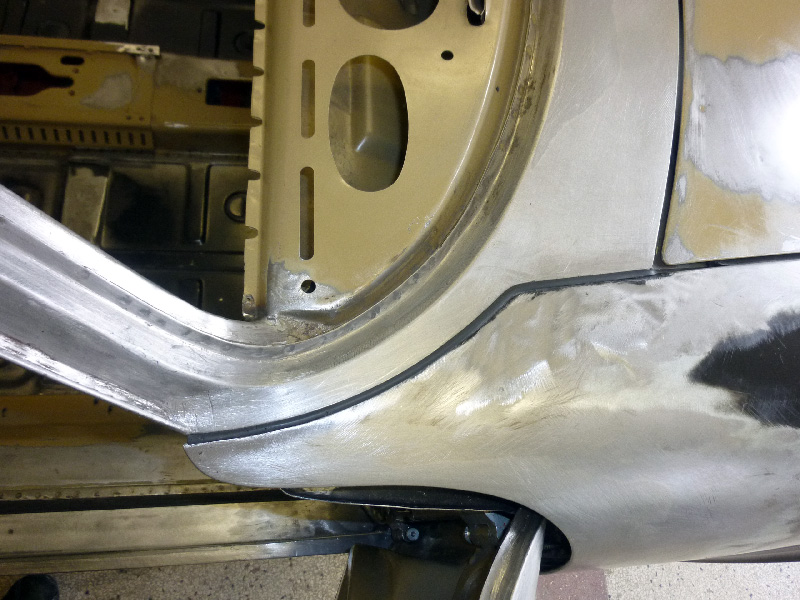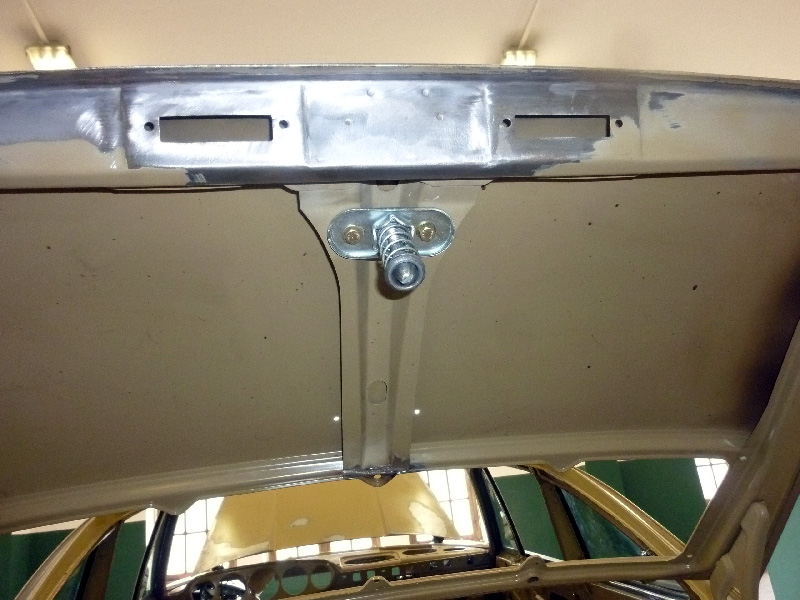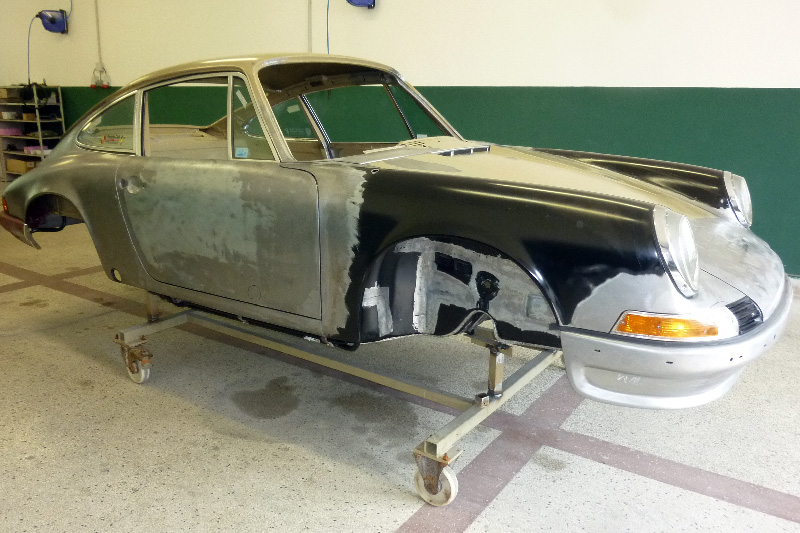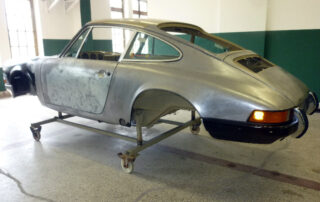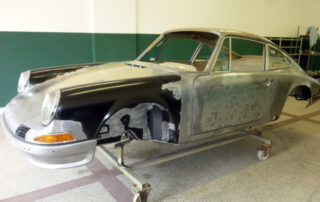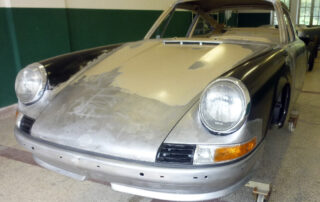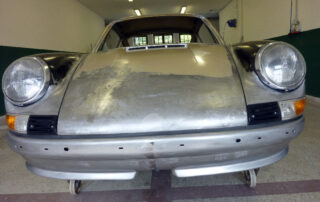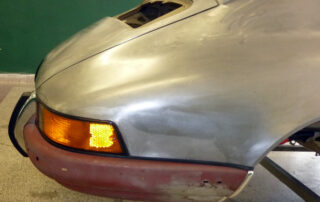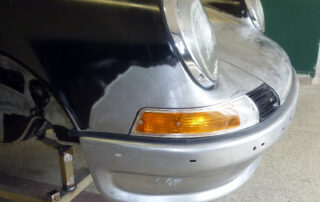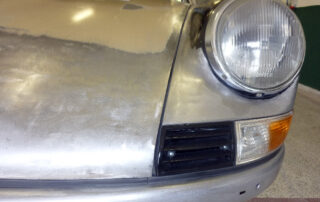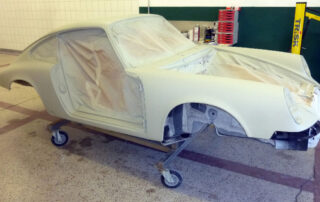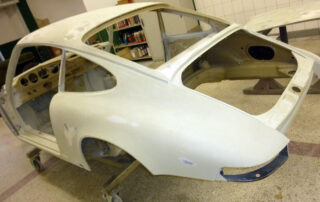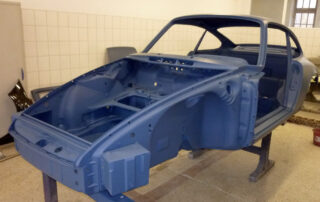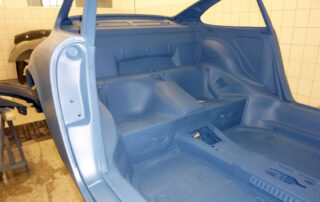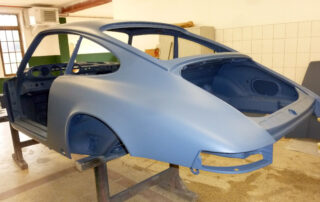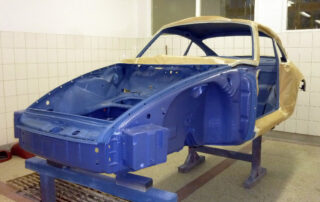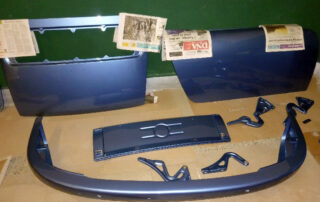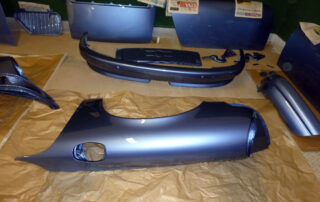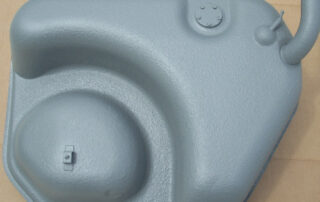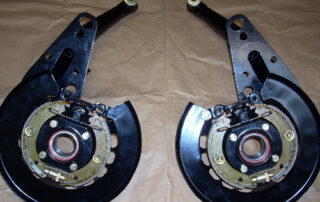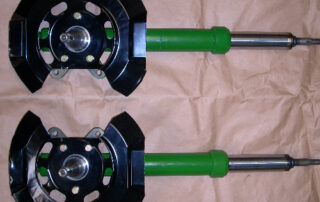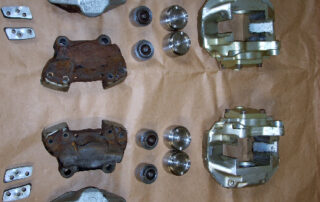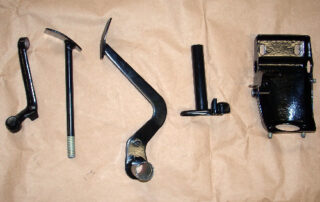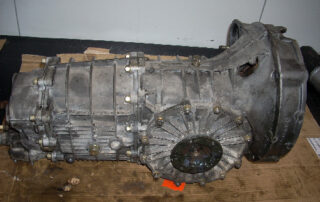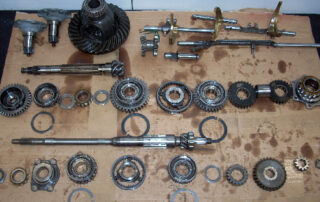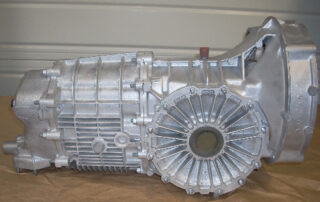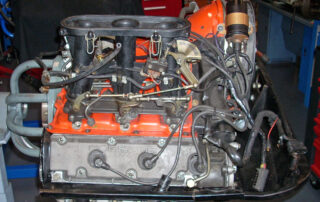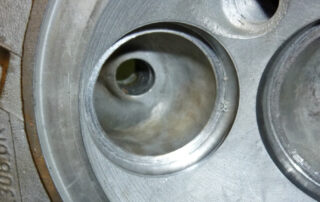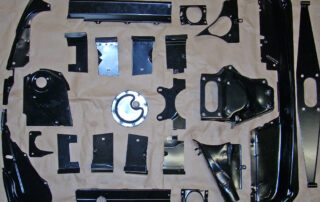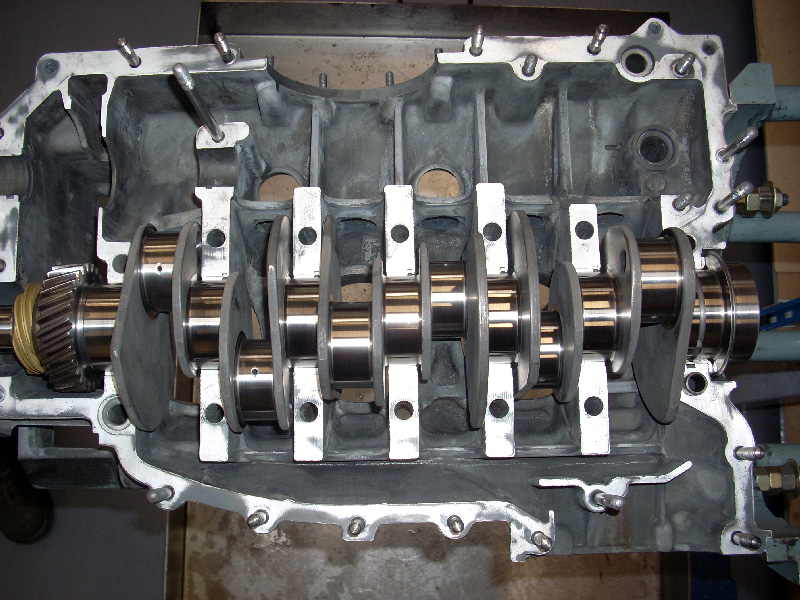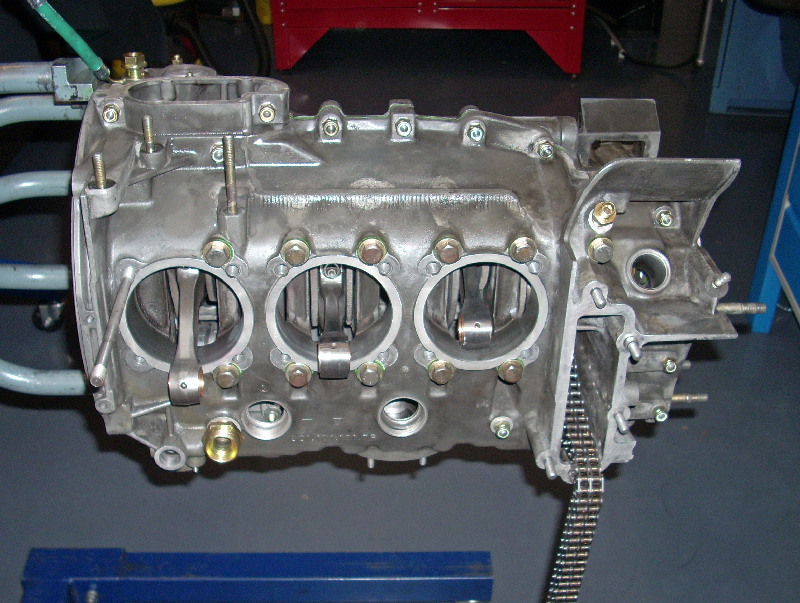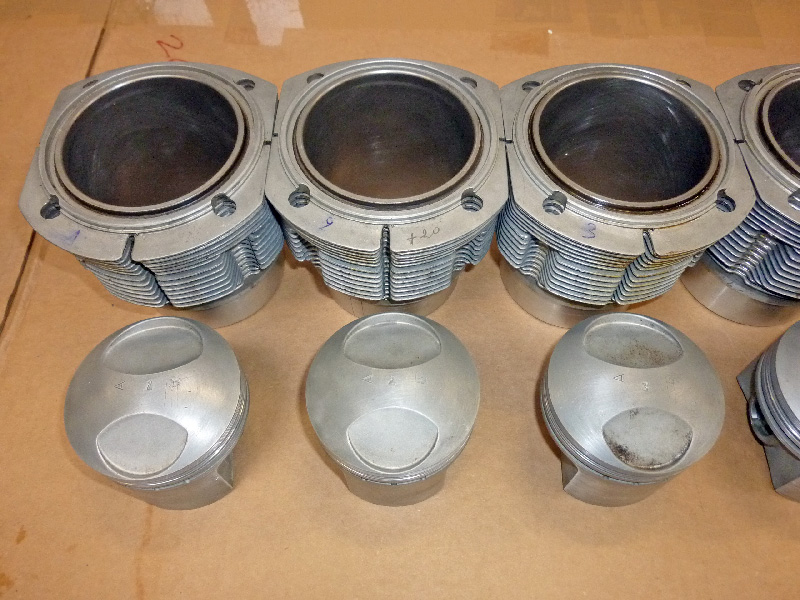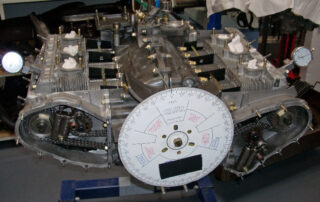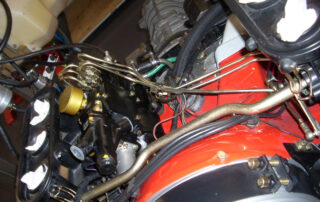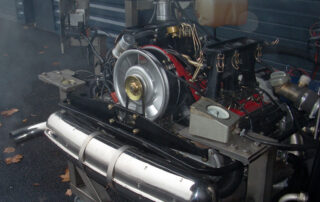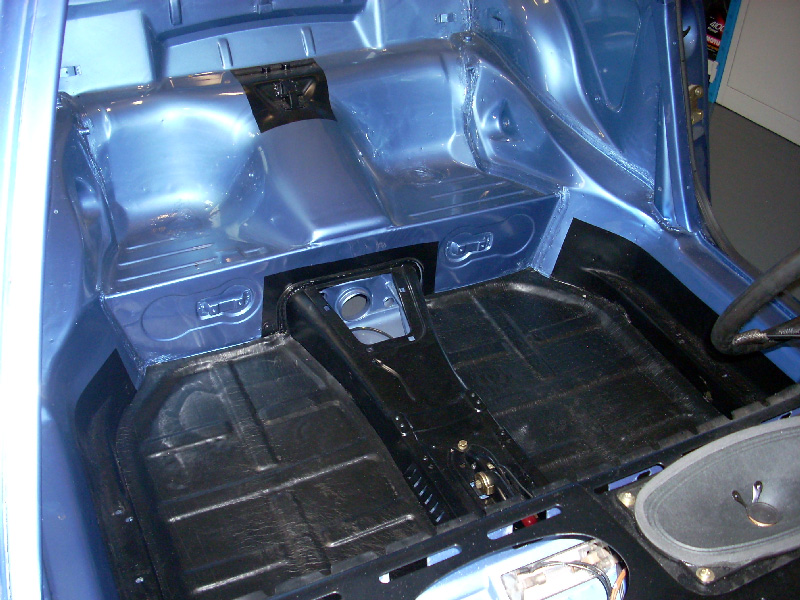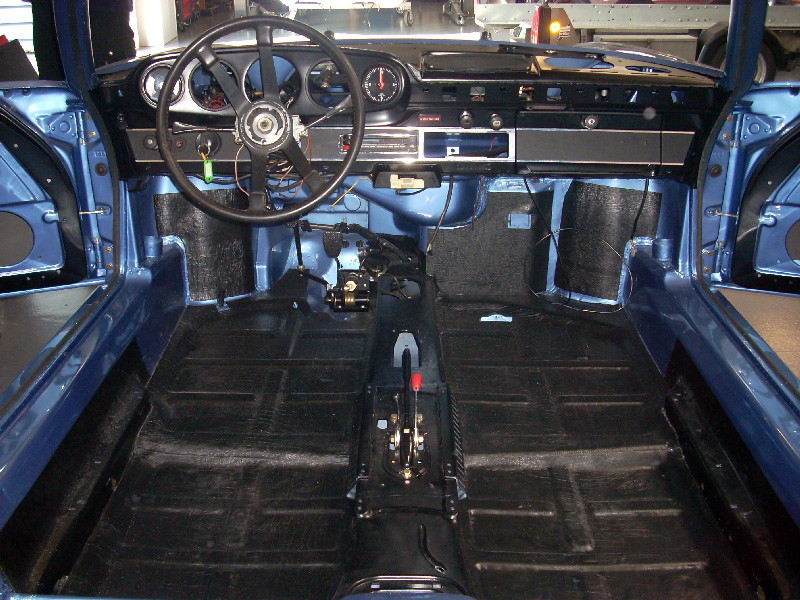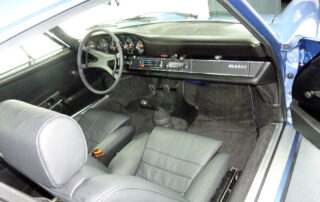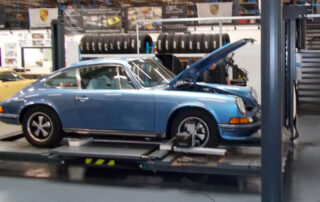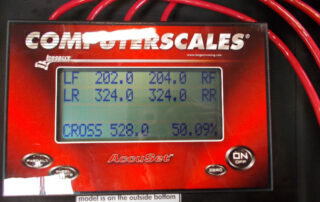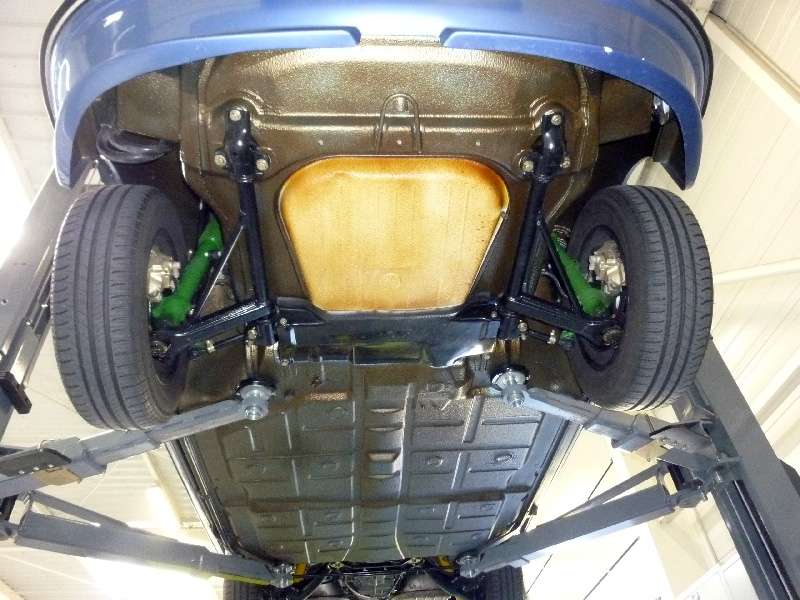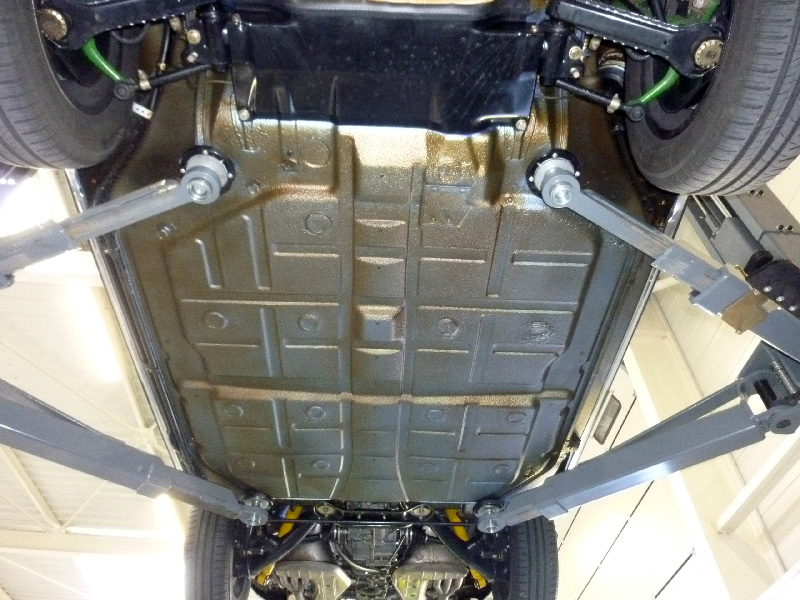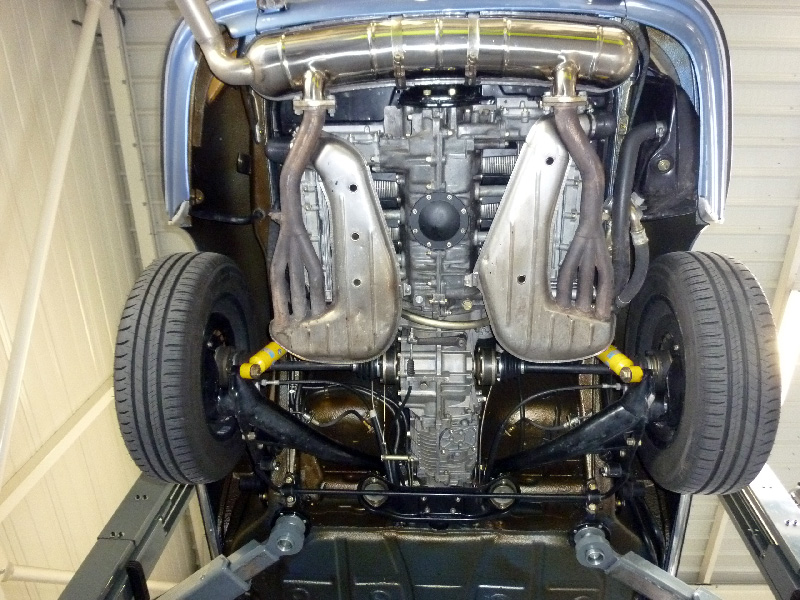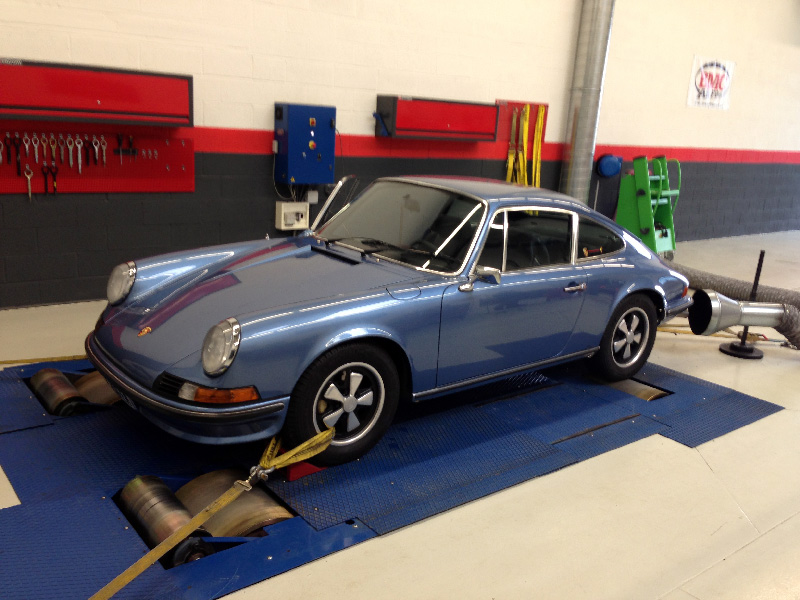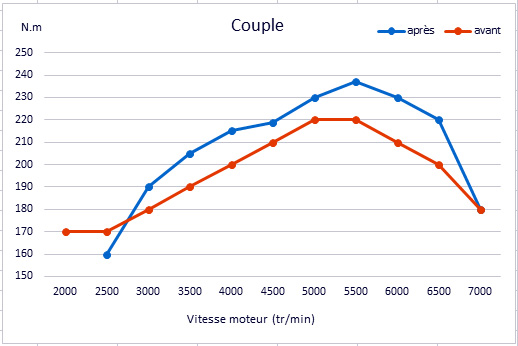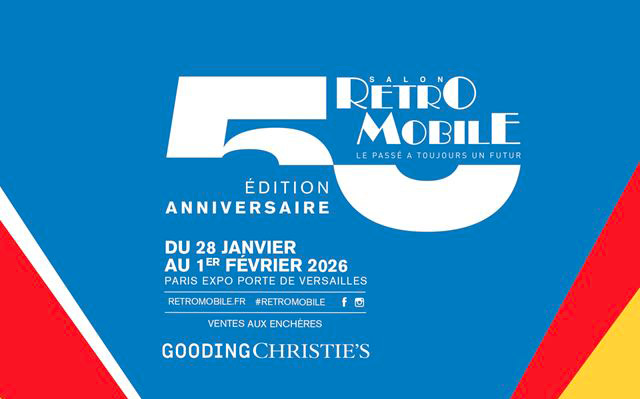911 2.4E – Learn about the rebuilding of its severely damaged hull, its complete restoration to 2.4 S specifications, and the improved performance of its engine.
This 911 E arrived at the workshop on a tray, the engine had just been upgraded to S specifications but was running so well that its owner found it unplayable and thought it safer to bring it on a tray. Its bodywork was not too bad, a few rust spots, but nothing more for a classic.
Once the engine problems were understood, we considered repainting it. But areas where the screwdriver fits effortlessly in the spars and traces of a very badly repaired shock on the front lead us to investigate further and discover that its hull has been cut in two to replace the front part with another half-hull (not from the same year).
The latter has again suffered a shock. Once the anti-gravel is scraped off, you can see the cut of the floor, the tunnel and the rocker panels. The large welds were not even ground.
Once the findings are made, we leave for a complete chemical stripping and cataphoresis.
The cataphoresis return shows rusty areas on the wings, the front block, the door feet, the rear wing feet.
We also notice that the front shock absorbers have been modified and welded on the wheel arches.
We can also see that the lower part of the body, next to the jack support, is already cracked on all its length.
The door panels look like a minefield, a good thickness of putty covered it all…
The repair work on the hull will be done on marble. We will remove all the damaged elements and rebuild the front cell with the entire floor.
The inner rocker panels are removed, straightened and re-welded as original. Shaped parts are manufactured to reshape the underbody and the tunnel. All piping inside the tunnel is rebuilt.
The front wheel arches are new, as well as the front face and front side rails.
The structure of the hull is redone.
The external oil lines to the front radiator are installed.
The doors and hoods are repaired, the four new fenders are put in place.
A complete blank assembly is done to finalize all the adjustments of the different elements.
All adjustments are carefully made with tin.
An epoxy is applied to the hull and to all the elements to protect them against rust. Then a polyester primer is applied as well as a tinted finishing primer in the mass.
Tinted anti-gravel is applied to the hull and the elements. In the last step, the painting is done.
The tank is repainted and all the parts of the running gear are sandblasted, chromated and then a baked epoxy is applied.
The running gear is reassembled with new bearings, new ball joints, new shocks, new bellows. The brakes are also refurbished. The calipers are reconditioned to new. The pedalboard is also refurbished.
The gearbox is also rebuilt. All bearings, seals and synchros are replaced as new. We will also reduce the reduction ratios of the 4 and 5.
The engine will finally be dismantled and rebuilt to our standards. We discovered valve guides that had been changed but that would not have lasted long because they were not tightened enough: the scale was rising between the guides and the cylinder heads.
The engine plates are sandblasted, chromated and then epoxied in the oven.
The lower engine is reconditioned to our standards. The connecting rod rings are changed and balanced. Cylinders and pistons are also reconditioned to our standards.
Valves, guides and seats are changed. The flywheel is balanced.
The engine is started on a structure before joining its brand new hull.
The tedious gluing of the soundproofing is done with care. The electrical harness is reconditioned. The interior is also redone, the meters are redone, the dashboard too. The Sport seats are refurbished.
Once reassembled, the adjustment of the running gear is done with the help of four scales to balance the car.
After having driven about 1000 km and debugged any malfunctions, a wax is applied under the entire hull to protect it from moisture.
Last step, a power measurement on a chassis dynamometer is performed before delivering the car to its owner. The reading confirms the extra torque felt during the tests.
Mileage : km – Year : 1973 – Price :

